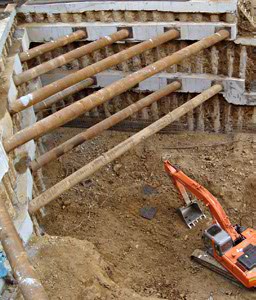|
 |
Earthquake Engineering
Engineering Seismology
Dynamic Properties Determination
Ground Motion Time Histories and Response Spectra
Seismic Design Recommendations
Seismic Stress Analyses
Seismic Stability Investigations
Monitoring of Earthquake Motions
Computer Modeling and Soil-structure Interaction
SEISMIC RISK ASSESSMENT & EARTHQUAKE ENGINEERING
NYS Consulting & Construction’ staff has special expertise in seismic geology and engineering, including identification of the causative fault, site response studies, seismic risk assessment, and liquefaction potential analysis and mitigation.
NYS Consulting & Construction Seismic Risk Assessment services include the following abilities:
• Cataloguing the historical seismicity and regional tectonic structures for the site.Estimation of site intensities for important historic seismic events.
• Identification of well-defined zones or regions contributing to the seismicity of the site ("hot spots") and establishment of recurrence intervals and the seismic capabilities for each zone. Areas within 300km of the site, and not belonging to any specific zones, are accounted for as background seismicity.
• Selection of attenuation relationships for the seismic acceleration or intensity based on region-specific data, if available.
• Seismic hazard analysis using state-of-practice methodology. Establishment of the relationship between peak horizontal acceleration versus the return period. Parametric studies to establish the design accelerations and return period curves Selection of amplification factors if foundation materials are other than rock ("lithified geologic materials").
Geotechnical Analyses include the following:
• Analysis of the capability of slopes to withstand the maximum horizontal acceleration from site-specific risk assessment, employing pseudo-static or dynamic methods.
• Analysis of seismic response using computer programs "SHAKE" or "QUAD4".
• Analysis of deformations of embankments occurring during strong ground motions using Newmark's method. (Deformations during shaking are normally very small and tolerable, therefore governing design.)
• Assessment of liquefaction potential employing either a simplified approach using correlations or results of response analysis.
• Evaluation of unstable areas such as those including poor foundation conditions, areas susceptible to mass movements, seismic deformations and Karst terrains.
Back to page |